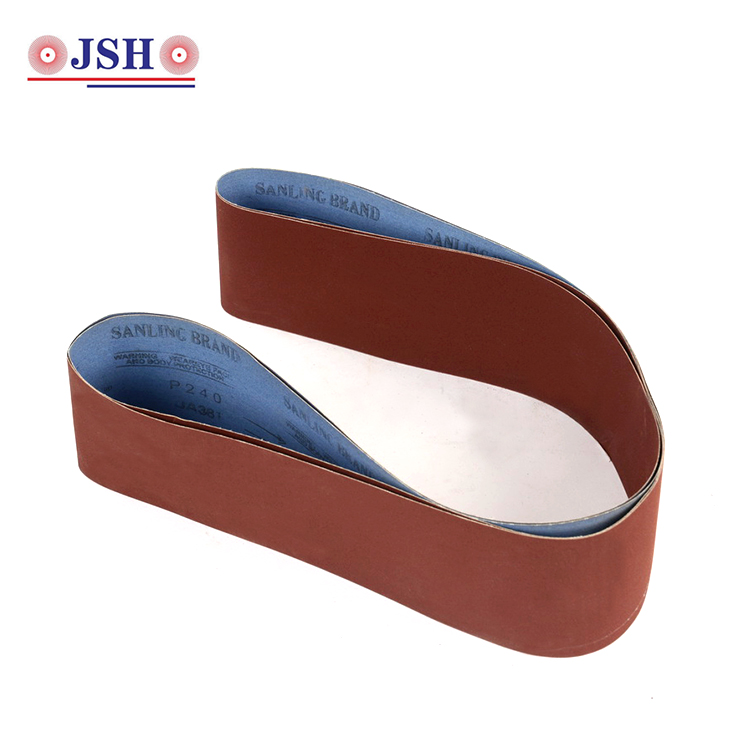Abrasive belts play a crucial role in various industries and applications, such as woodworking, metalworking, and automotive. They are designed to remove material, shape surfaces, and achieve desired finishes.
How long abrasive belts last before needing replacement can vary depending on various factors, including the specific application, material being worked on, machine speed, and the aggressiveness of the task. Generally, abrasive belts have a limited lifespan due to wear and tear. However, it's important to note that there is no fixed timeframe for replacing belts as it largely depends on the following:
● Application
● Material Being Worked On
● Machine Speed
● Belt Grit
● Operator Technique

However, like any tool, abrasive belts have a limited lifespan and need to be replaced periodically. You may want to consider replacing your abrasive belts when any of the following occurs.
Abrasive belts experience wear and tear over time due to constant usage and friction. As the belt wears, it becomes less effective at removing material and achieving the desired finish.
A noticeable decline in cutting performance is a clear indicator that it's time to replace the abrasive belt. Inconsistent or uneven finishes also suggest that the abrasive belt has become dull and needs replacement.
Abrasive belts can become clogged with debris, especially when working on soft materials or those prone to generating a lot of dust. Excessive loading prevents the abrasive grit from effectively contacting the workpiece, reducing cutting efficiency. If cleaning the belt doesn't restore its performance, it's likely time for a replacement.
Any damage to the abrasive belt, such as tears, punctures, or uneven wear, compromises its effectiveness. Damaged belts can leave marks on the workpiece, affect the quality of the finish, and pose safety risks. Inspect belts regularly for signs of damage and replace them promptly to maintain optimal performance.
Abrasive belts must track properly on the machine's drive and idler pulleys to ensure even wear and prevent damage. Belts that consistently track poorly or are off-center may cause premature wear and shorten their life. Misaligned belts not only affect performance but can also damage the machine or cause safety hazards.
The lifespan of an abrasive belt varies based on several factors, such as the material being worked on, the machine's speed, and the aggressiveness of the application. Coarser-grit belts generally have a shorter lifespan than finer-grit belts due to the higher rate of material removal. It is essential to monitor the belt's condition and replace it as soon as signs of wear or diminished performance appear.
Knowing when to replace abrasive belts is crucial to maintain efficiency, achieve desired finishes, and ensure safety. Considering these factors, it is essential to monitor the condition of the abrasive belt regularly during use. By replacing the belt promptly, you can ensure optimal performance, maintain quality finishes, and prevent any potential safety hazards.
Remember that it's always advisable to follow the manufacturer's recommendations and guidelines for replacing abrasive belts. Each manufacturer may provide specific guidance based on their product's design and performance characteristics.
By choosing high-quality abrasive belts from trusted manufacturers like JSH, you can maximize productivity, minimize downtime, and achieve optimal results in your applications. When you are thinking of replacing your abrasive belts, browse through JSH's product gallery, there may be one here that you are pleased with.